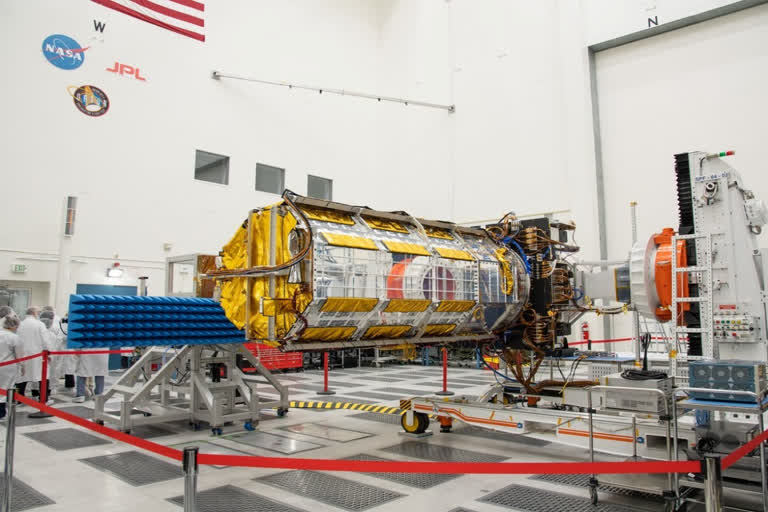California [US]: NASA-ISRO Synthetic Aperture Radar or NISAR, an Earth science satellite being jointly built by the National Aeronautics and Space Administration (NASA) and the Indian Space Research Organisation (ISRO), got a send-off ceremony in California before it ships out to its last stop - India.
ISRO Chairman S Somanath, JPL Director Laurie Leshin, and dignitaries from NASA headquarters including Bhavya Lal, NASA's associate administrator for technology, policy, and strategy were present at NASA's Jet Propulsion Laboratory (JPL) for the send-off. "Today we come one step closer to fulfilling the immense scientific potential NASA and ISRO envisioned for NISAR when we joined forces more than eight years ago," Somanath said.
"This mission will be a powerful demonstration of the capability of radar as a science tool and help us study Earth's dynamic land and ice surfaces in greater detail than ever before," he added. NISAR mission, planned to launch in 2024, is expected to systematically map Earth, using two different radar frequencies to monitor resources such as water, forests and agriculture.
The mission will provide important Earth science data related to ecosystems, Earth's surface, natural hazards, sea level rise and the cryosphere, "This marks an important milestone in our shared journey to better understand planet Earth and our changing climate," Leshin said.
"NISAR will provide critical information on Earth's crust, ice sheets, and ecosystems. By delivering measurements at unprecedented precision, NISAR's promise is a new understanding and a positive impact in communities. Our collaboration with ISRO exemplifies what's possible when we tackle complex challenges together," added Leshin.
